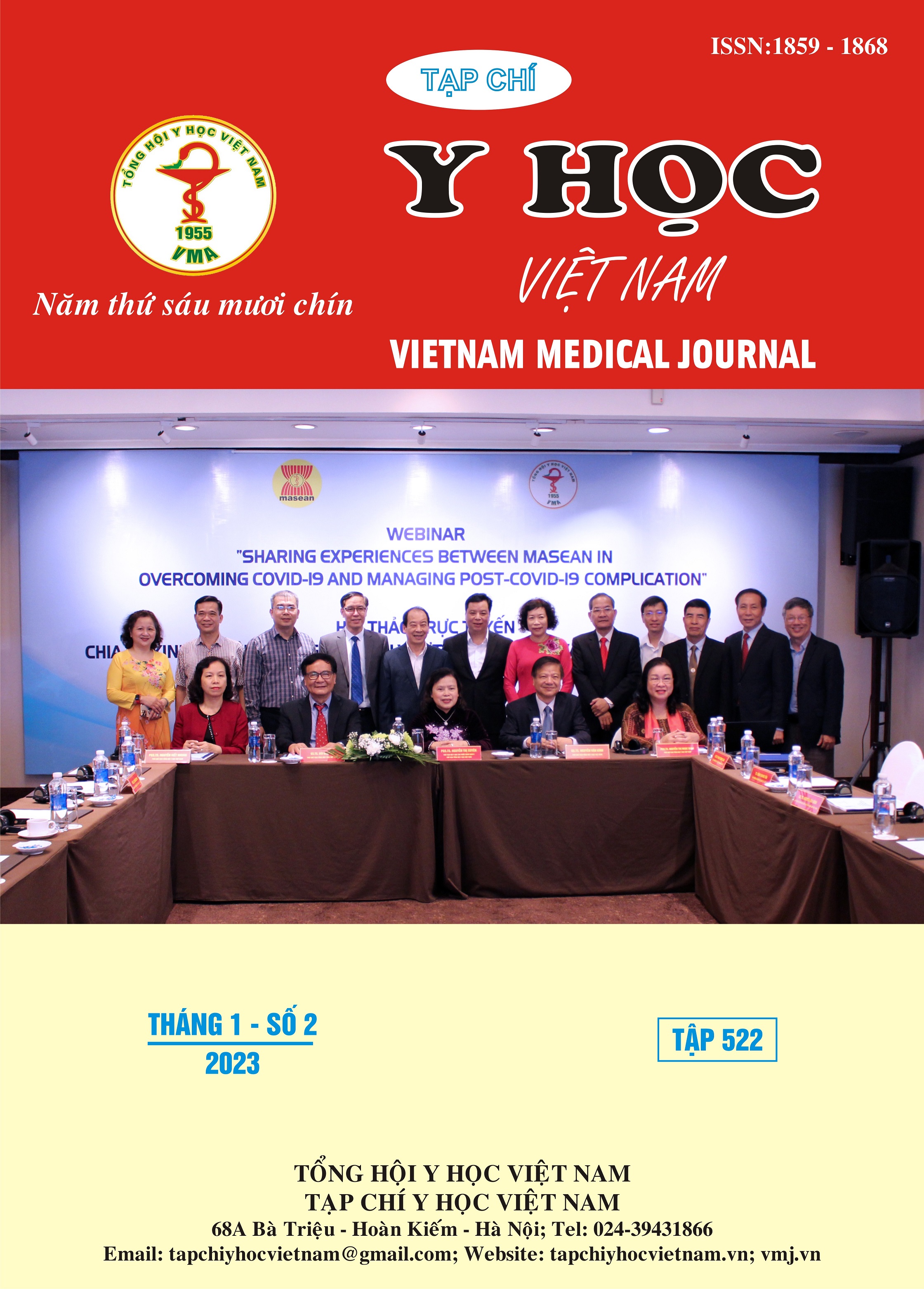VEIN OF GALEN ANEURYSMAL MALFORMATIONTREATED BY ENDOVASCULAR INTERVENTION AT THE NATIONAL CHILDREN'S HOSPITAL
Main Article Content
Abstract
Purpose: Description of clinical features, MRI and endovascular interventional characteristics of patients with Galen venous malformation. Materials and methods: Description of a cross-sectional study case-seri of Galen vein malformations treated by endovascular intervention at the National Children's Hospital from 2019-2020. Results:4/7cases were diagnosed prenatally in the 3rd trimester of pregnancy, 2/7 cases with heart failure were found in newborns, in children > 1 month old, 3/5 had no symptoms, 2/5 had big head. 5/7 patients had the artery supplying the malformation from the anterior choroidal artery or the posterior choroidal arteryor both. 2/7 of the malformations had branches from the posterior cerebral artery and anterior cerebral artery supplying to the malformation. The mural type is found in 3/7 cases, 4/7 is the choroidal type. The rate of complete or almost complete obliteration of the malformation is 3/7 case, all of which are found in the mural type. Recorded 2/7 cases with complications drifting embolized material to the venous sinuses for drainage and 1/7 cases with bilateral femoral artery occlusion. Conclusions: Endovascular intervention is effective in the treatment vein of Galen malformation
Article Details
Keywords
vein of galen aneurysmal malformation, endovascular intervention.
References
2. Lasjaunias P.L. et al. The management of vein of Galen aneurysmal malformations. Neurosurgery, 2006. 59(5 Suppl 3): p. S184-94; discussion S3-13.
3. Khullar D., AndeejaniA.M., BulsaraK.R. Evolution of treatment options for vein of Galen malformations. J Neurosurg Pediatr, 2010. 6(5): p. 444-51.
4. Geibprasert S. et al. Predicting factors for the follow-up outcome and management decisions in vein of Galen aneurysmal malformations. Childs Nerv Syst, 2010. 26(1): p. 35-46.
5. Hartung J. et al. Detection of an aneurysm of the vein of Galen following signs of cardiac overload in a 22-week old fetus. Prenat Diagn, 2003. 23(11): p. 901-3.
6. Chevret L. et al. Severe cardiac failure in newborns with VGAM. Prognosis significance of hemodynamic parameters in neonates presenting with severe heart failure owing to vein of Galen arteriovenous malformation. Intensive Care Med, 2002. 28(8): p. 1126-30.
7. Andeweg J. The anatomy of collateral venous flow from the brain and its value in aetiological interpretation of intracranial pathology. Neuroradiology, 1996. 38(7): p. 621-8.
8. Wagner K.M. et al. Vein of Galen Malformations: The Texas Children's Hospital Experience in the Modern Endovascular Era. Oper Neurosurg (Hagerstown), 2019. 17(3): p. 286-292.
9. Jones B.V. et al. Vein of Galen aneurysmal malformation: diagnosis and treatment of 13 children with extended clinical follow-up. AJNR Am J Neuroradiol, 2002. 23(10): p. 1717-24.


